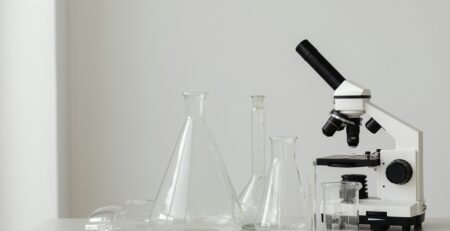29
Aug
Beaker Safety in Heating Applications – Best Practices for Australian Labs
Heating is one of the most common laboratory procedures, but it’s also one of the most likely to cause accidents when using glassware. Borosilicate beakers are engineered for high-temperature use, yet safety depends on proper handling, setup, and awareness of limitations.
Choosing the Right Beaker for Heating
BORO 3.3 borosilicate glass beakers are compliant with ISO 3585 and ASTM E438 standards, giving them high resistance to thermal shock. Low-form beakers are often preferred for heating due to their wide base and stability, while tall-form beakers suit slower heating and reduced evaporation. Always check for chips or cracks before applying heat, as flaws increase the risk of breakage.
Best Heating Practices
- Gradual heating: Move beakers from room temperature to heat sources slowly to avoid stress fractures.
- Use heat diffusers: Wire gauze or ceramic pads distribute flame heat evenly, preventing hot spots.
- Magnetic stirrers with hot plates: Encourage even heat distribution and reduce bumping during boiling.
- Avoid dry heating: Always ensure liquid is present when heating beakers to prevent damage.
Common Safety Mistakes
Many labs mistakenly place cold beakers directly onto hot plates or open flames. This sudden thermal shock can crack even borosilicate glass. Another common error is heating beyond the beaker’s working capacity, causing liquid splashes or loss of sample. Proper safety training reduces both risks and replacement costs.
Real-World Anecdote
At a Victorian secondary school, a teacher demonstrated boiling water in a soda-lime beaker, which cracked under direct flame. After switching to BORO 3.3 beakers and using wire gauze supports, incidents dropped to zero across three terms. This change not only improved safety but also reinforced the importance of choosing the right material for the right application.
Sustainability and Safety Combined
Reusable borosilicate beakers reduce the need for disposable plastics in heating experiments. By lowering replacement frequency and avoiding single-use alternatives, labs not only improve safety but also cut waste. For schools and universities reporting on sustainability, this simple shift strengthens both environmental and safety outcomes.
FAQs
Can borosilicate beakers be heated directly with a flame?
Yes, but indirect heating with gauze or a hot plate is recommended for safety.
What liquids are unsafe to heat in beakers?
Strong hydrofluoric acid and some alkali solutions can etch or weaken glass.
Are plastic beakers safe for heating?
No, polypropylene and other plastics deform at high temperatures and are unsuitable for flame or hot plate heating.
Comparison Table – Heating Safety Practices
| Practice | Unsafe Method | Safe Alternative |
|---|---|---|
| Flame Heating | Direct cold-to-flame | Gradual heating with gauze support |
| Hot Plate Use | Overheating beyond capacity | Controlled heating with stirring |
| Material Choice | Soda-lime or plastic beakers | BORO 3.3 borosilicate glass |
| Sustainability | Disposable beakers | Long-life reusable glass |
References
- ISO 3585: Borosilicate Glass 3.3 – Material Standards
- ASTM E438: Laboratory Glassware Safety Requirements
- AS/NZS 2243.2: Safety in Laboratories – Chemical and Thermal Aspects
- Monash University – Laboratory Heating Equipment Guidelines

